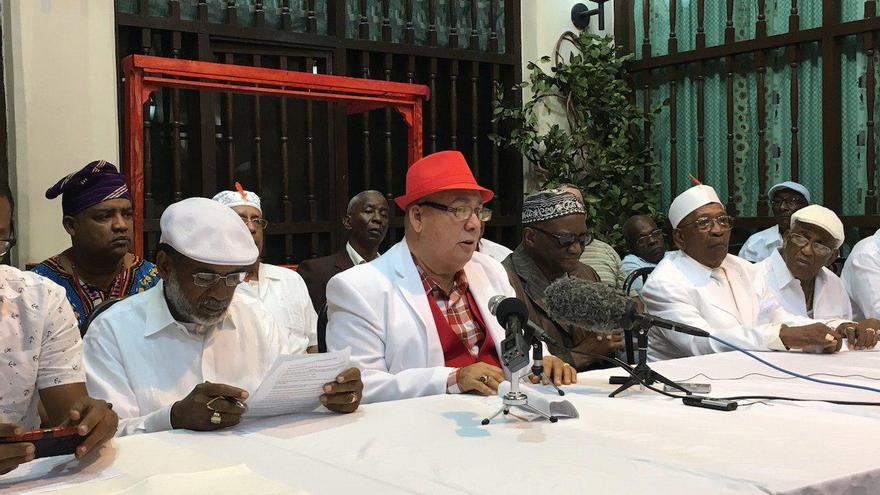
![]() 14ymedio, Zunilda Mata, Havana, 3 January 2018 — The controversy broke out after the publication of the 2018 Letter of the Year. The series of predictions — provided every January by the priests of the Yoruba religion — has raised a cloud of criticism expressed in calls to “not conspire” and to respect authority, something that several babalaos ignore as taking the side of the Government.
14ymedio, Zunilda Mata, Havana, 3 January 2018 — The controversy broke out after the publication of the 2018 Letter of the Year. The series of predictions — provided every January by the priests of the Yoruba religion — has raised a cloud of criticism expressed in calls to “not conspire” and to respect authority, something that several babalaos ignore as taking the side of the Government.
The annual predictions were released on January 1 after a sequence of ceremonies held jointly by the official Yoruba Cultural Association of Cuba and the independent Miguel Febles Padrón Commission, at the headquarters of the former on Prado Street in Havana.
For two years now, both entities have collaborated to produce the Letter of the Year — unlike previous years when competing Letters were issued — and this time they recognize the orisha Yemayá, goddess of motherhood, as the ruling deity and as a companion to Elegguá, represented as a child who “opens the roads” and has many followers on the Island.
This year’s controversy did not emerge from the differences between predictions that characterized the years in which two Letters were published, but by the content of the consensual document. The unusual enthusiasm shown by the official government press to spread the predictions has also generated misgivings.
One of the most controversial points has been the recommendation “not to conspire or to be part of any conspiracy in any way,” a point to which is added not to fall into “talk against anyone to avoid being exposed to great misfortunes and end up being ridiculed.”
“This is not the same as before because now it looks like a ‘Letter from the Police’ instead of a ‘Letter of the Year’,” lamented Lucinda, a practitioner of African religions living near the Plaza de Cuatro Caminos, an area where products used in Santeria rituals are sold.
Lucinda insists that for years she followed the predictions made by the Miguel Febles Padrón Commission and that they were made public in the first days of the year in their headquarters in the neighborhood of Lawton. “Since they joined the Yoruba Association, they only know how to make you afraid so you’ll keep quiet.”
The Letter includes bad omens for agriculture, news that plays very badly among those who waited for a more promising forecast for food production, after a year characterized by shortages and high prices of agricultural products.
The recommendation “not to be rushed to accomplish achievements or successes” also makes some uncomfortable, in the midst of a national context characterized by the slowdown in the economic reforms promoted by Raúl Castro after his arrival to power, a slowdown that has led to a pause in the issuance of numerous licenses for self-employment.
“At ONAT (National Tax Administration Office) they tell me that right now I can’t get a permit to rent a room and now the babalaos recommend that I don’t rush into business,” lamented Marcial, 28, this Wednesday as he waited to buy flowers for his orishas at the market on San Rafael street.
The controversy has reached the Free Yorubas Association, an independent group made up of priests of this religion, who have called the Letter “totally manipulated and in tune with the interests of materialistic atheist tyranny.”
The entity insists that the babalaos who prepared the Letter of the Year “lack religious moral authority to speak on behalf of the Yoruba or to publish predictions that affect the present and future” of the country.
__________________________
The 14ymedio team is committed to serious journalism that reflects the reality of deep Cuba. Thank you for joining us on this long road. We invite you to continue supporting us, but this time by becoming a member of 14ymedio. Together we can continue to transform journalism in Cuba.
